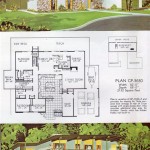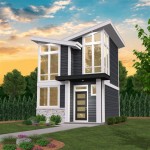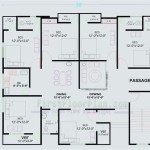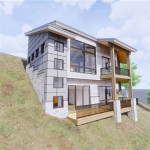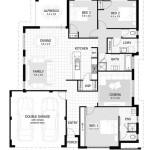Small 2-Story Cottage House Plans: Maximizing Space and Charm
The allure of a small cottage resides in its ability to blend functionality with aesthetic appeal, often evoking feelings of warmth, comfort, and simplicity. When considering a two-story cottage house plan, the advantages are amplified, allowing for a more efficient use of land while retaining the inherent charm associated with cottage architecture. These plans are particularly relevant in areas with limited land availability or for those seeking a more compact and manageable living space. The design considerations for small 2-story cottage house plans are multifaceted, encompassing space optimization, architectural style, and lifestyle needs.
This article will explore the key aspects of small 2-story cottage house plans, delving into the factors influencing their design, the advantages they offer, and considerations for maximizing their potential. From architectural styles to interior layouts, a comprehensive understanding of these plans is essential for prospective homeowners aiming to build a charming and functional dwelling.
Optimizing Space in a Compact Footprint
The primary challenge in designing a small 2-story cottage lies in efficiently utilizing the available space. Every square foot must be meticulously planned to ensure functionality and avoid a cramped or claustrophobic feeling. This necessitates a strategic approach to both the floor plan and the vertical dimension of the house.
One of the most effective methods for space optimization is employing an open floor plan concept. This involves minimizing the number of interior walls on the main floor, creating a seamless flow between the living room, dining area, and kitchen. This not only enhances the sense of spaciousness but also facilitates natural light penetration, further contributing to a brighter and more airy ambiance. The strategic placement of windows is crucial to maximize natural light. Large windows, particularly on the southern exposure, can dramatically brighten interior spaces, reducing the need for artificial lighting and creating a more inviting atmosphere.
Staircase design is another critical consideration for space optimization. A compact staircase, such as a spiral staircase or a winder staircase, can significantly reduce the floor space occupied by the stairs. While spiral staircases offer a visually appealing alternative, winder staircases provide a more gradual ascent, potentially making them more comfortable for some users. The space beneath the staircase can also be utilized for storage, such as a pantry, a small home office, or a powder room.
Built-in storage solutions are invaluable in small cottage designs. Incorporating built-in shelves, cabinets, and window seats maximizes storage capacity while minimizing the need for bulky furniture. These integrated storage solutions can be seamlessly incorporated into the architectural design, creating a cohesive and functional aesthetic. Vertical space should be fully utilized, with tall cabinets and shelving extending towards the ceiling to maximize storage potential.
Consider the use of multi-functional furniture. Furniture designed for multiple purposes, such as sofa beds, storage ottomans, and extendable dining tables, can significantly enhance the functionality of a small space. These pieces can transform a single room into a multi-purpose area, adapting to different needs throughout the day. For instance, a living room can be easily converted into a guest room with the use of a sofa bed.
Careful consideration should be given to the placement of utilities and appliances. Compact appliances, such as a stacked washer and dryer or a smaller refrigerator, can save valuable floor space in the kitchen and laundry areas. Optimizing the layout of kitchen cabinets and countertops to maximize storage and workspace is equally important.
Architectural Styles and Design Elements
Small 2-story cottage house plans can be adapted to various architectural styles, each possessing unique characteristics and aesthetic nuances. Some popular styles include English cottage, French country, and modern cottage. The choice of architectural style significantly influences the overall appearance and appeal of the house.
English cottage architecture is characterized by its quaint and charming appearance, often featuring steeply pitched roofs, dormer windows, and asymmetrical facades. Exterior materials typically include brick, stone, and stucco, creating a rustic and textured look. Inside, English cottages often feature exposed beams, cozy fireplaces, and warm, inviting color palettes.
French country cottage designs are inspired by the rural architecture of France, often incorporating elements such as stucco walls, arched doorways, and decorative shutters. These cottages tend to exhibit a more refined and elegant aesthetic compared to English cottages, with a focus on natural light and garden views. Interior features often include exposed wooden beams, stone floors, and a muted color palette with accents of blue and yellow.
Modern cottage architecture blends traditional cottage elements with contemporary design principles. This style often features clean lines, large windows, and open floor plans, creating a bright and airy living space. Exterior materials can include wood siding, stone accents, and metal roofing. The interior design typically emphasizes minimalism and functionality, with a focus on natural materials and a neutral color palette.
Irrespective of the chosen architectural style, certain design elements are essential for creating a cohesive and aesthetically pleasing cottage. The roofline is a prominent feature that significantly impacts the overall appearance of the house. A steeply pitched roof with dormer windows adds character and visual interest, while also providing additional headroom on the upper floor. The inclusion of a front porch or veranda enhances the curb appeal and provides a welcoming outdoor space.
Exterior materials play a crucial role in defining the architectural style of the cottage. Natural materials such as wood siding, stone cladding, and brick accents contribute to a rustic and organic aesthetic. Windows and doors are important features that can enhance both the aesthetic appeal and the functionality of the house. Casement windows, double-hung windows, and French doors can be incorporated to maximize natural light and ventilation.
Interior design elements such as exposed beams, fireplaces, and built-in storage solutions contribute to the overall charm and functionality of the cottage. The color palette should be carefully chosen to create a warm and inviting atmosphere. Muted colors, such as soft greens, blues, and yellows, are often used to evoke a sense of tranquility and comfort. Accent colors can be incorporated through furniture, fabrics, and accessories.
Considerations for Functionality and Lifestyle
Beyond optimizing space and architectural style, it is crucial to consider the functionality of the house and the lifestyle needs of the occupants. The layout of the rooms, the flow of traffic, and the accessibility of various areas should be carefully planned to ensure a comfortable and convenient living experience.
The placement of bedrooms and bathrooms is a key consideration. Typically, bedrooms are located on the upper floor to provide privacy and separation from the main living areas. The number of bedrooms and bathrooms will depend on the size of the household and their specific needs. It is important to ensure that each bedroom has adequate space for sleeping, storage, and studying or working.
Bathrooms should be conveniently located near the bedrooms and living areas. A powder room on the main floor is a practical addition for guests. The size and layout of the bathrooms should be carefully planned to maximize functionality and comfort. Consider incorporating features such as walk-in showers, double vanities, and ample storage space.
The kitchen is the heart of the home, and its design should reflect the lifestyle of the occupants. A well-designed kitchen should be functional, efficient, and aesthetically pleasing. The layout should facilitate easy movement between the different work areas, such as the sink, the stove, and the refrigerator. Ample counter space and storage space are essential for food preparation and storage.
The living room should be a comfortable and inviting space where family members can relax and spend time together. The size and layout of the living room should be appropriate for the size of the household. Consider incorporating features such as a fireplace, a built-in entertainment center, and comfortable seating arrangements.
Outdoor living spaces, such as a front porch, a back patio, or a balcony, can extend the living area and provide opportunities for outdoor relaxation and entertainment. The design of these outdoor spaces should complement the architectural style of the house and the surrounding landscape. Consider incorporating features such as outdoor seating, a dining table, and a barbecue grill.
Accessibility is an important consideration for homeowners of all ages and abilities. Universal design principles can be incorporated into the design of the house to ensure that it is accessible to people with mobility limitations. This may include features such as wider doorways, grab bars in the bathrooms, and ramps instead of stairs. Careful planning and attention to detail are essential for creating a small 2-story cottage house plan that is both charming and functional.

Two Story Cottage House Plan Olde Stone Plans Lake

Small 2 Story 3 Bedroom Southern Cottage Style House Plan Plans

Small Cottage Floor Plan With Loft Designs

Small Cottage Floor Plan With Loft Designs House Plans Homes

House Plans 2 Bedroom Plan Cottage Bed

Most Beautiful 2 Story Vacation House Plans Cottages Cabins

Cottage House Plans Home Designs Floor With Photos

Plan Small Cottage Homes 2 Bedroom Single Story With Screened Porch Davidreed Co In 2024 Sims House Plans Blueprints

Two Story Charming Cottage Style House Plan 8812

Small Cottage Plan With Walkout Basement Floor

